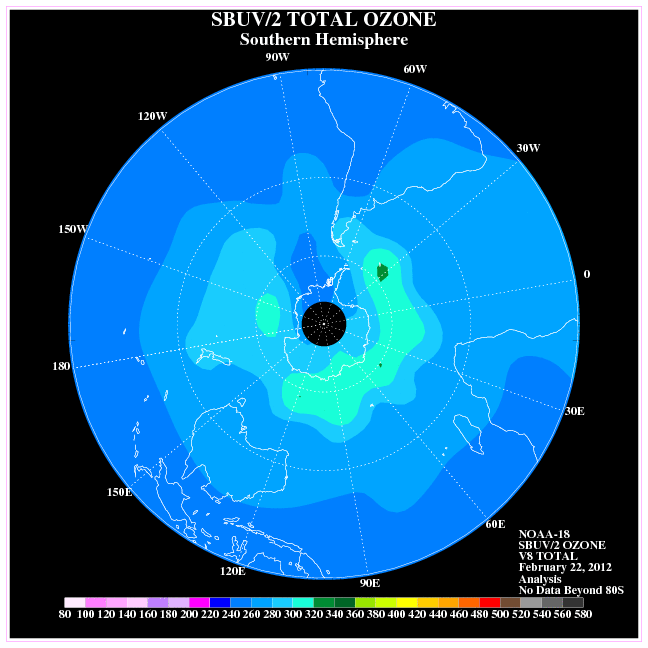Polar vortex
A polar vortex is an upper level low-pressure area lying near the Earth's poles. There are two polar vortices in the Earth's atmosphere, overlying the North and South Poles. Each polar vortex is a persistent, large-scale, low pressure zone that rotates counter-clockwise at the North Pole (called a cyclone), and clockwise at the South Pole, i.e. both polar vortices rotate eastward around the poles. The bases of the two polar vortices are located in the middle and upper troposphere and extend into the stratosphere. Beneath that lies a large mass of cold, dense arctic air. The vortices weaken and strengthen from year to year. When the vortex of the arctic is strong, it is well defined, there is a single vortex, and the arctic air is well contained; when weaker, which it generally is, it will break into two or more vortices; when very weak, the flow of arctic air becomes more disorganized and masses of cold arctic air can push equatorward, bringing with it a rapid and sharp temperature drop. The interface between the cold dry air mass of the pole and the warm moist air mass further south defines the location of the polar front. The polar front is centered, roughly at 60° latitude. A polar vortex strengthens in the winter and weakens in the summer due to its dependence on the temperature difference between the equator and the poles. The vortices span less than 1,000 kilometers (620 miles) in diameter within which they rotate counter-clockwise in the Northern Hemisphere, and in a clockwise fashion in the Southern Hemisphere. As with other cyclones, their rotation is driven by the Coriolis effect.
When the polar vortex is strong, there is a single vortex with a jet stream that is "well constrained" near the polar front. When the northern vortex weakens, it separates into two or more vortices, the strongest of which are near Baffin Island, Canada and the other over northeast Siberia. The Antarctic vortex of the Southern Hemisphere is a single low pressure zone that is found near the edge of the Ross Ice Shelf near 160 west longitude. When the polar vortex is strong, the mid-latitude Westerlies (winds at the surface level between 30° and 60° latitude from the west) increase in strength and are persistent. When the polar vortex is weak, high pressure zones of the mid latitudes may push poleward, moving the polar vortex, jet stream, and polar front equatorward. The jet stream is seen to "buckle" and deviate south. This rapidly brings cold dry air into contact with the warm, moist air of the mid latitudes, resulting in a rapid and dramatic change of weather known as a "cold snap."
Ozone depletion
The chemistry of the Antarctic polar vortex has created severe ozone depletion.
The nitric acid in polar stratospheric clouds reacts with chlorofluorocarbons to form chlorine, which catalyzes the photochemical destruction of ozone. Chlorine concentrations build up during the polar winter, and the consequent ozone destruction is greatest when the sunlight returns in spring. These clouds can only form at temperatures below about −80 °C (−112 °F). Since there is greater air exchange between the Arctic and the mid-latitudes, ozone depletion at the north pole is much less severe than at the south. Accordingly, the seasonal reduction of ozone levels over the Arctic is usually characterized as an "ozone dent," whereas the more severe ozone depletion over the Antarctic is considered an "ozone hole." This said, chemical ozone destruction in the 2011 Arctic polar vortex attained, for the first time, a level clearly identifiable as an Arctic "ozone hole."
